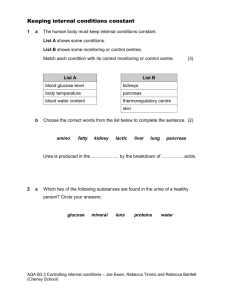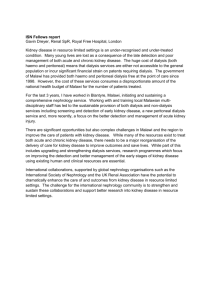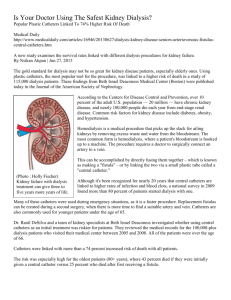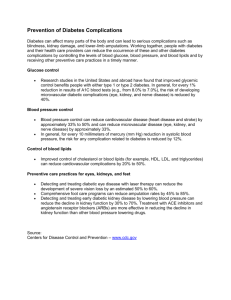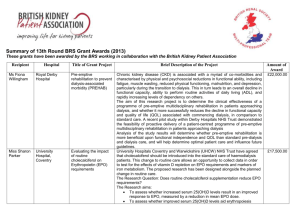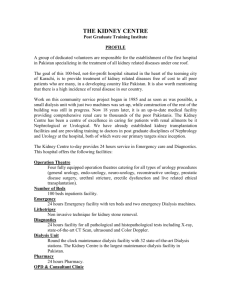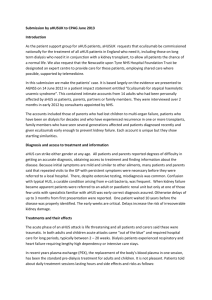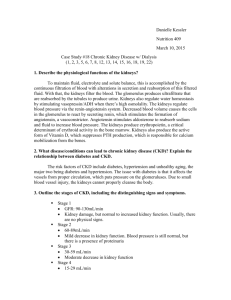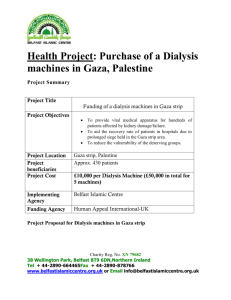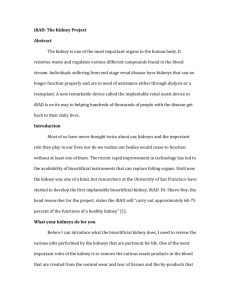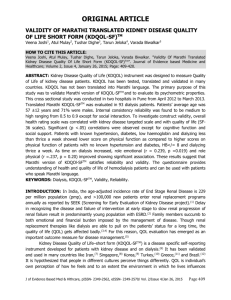2284-B3.3 Unit Lesson Sequence
advertisement
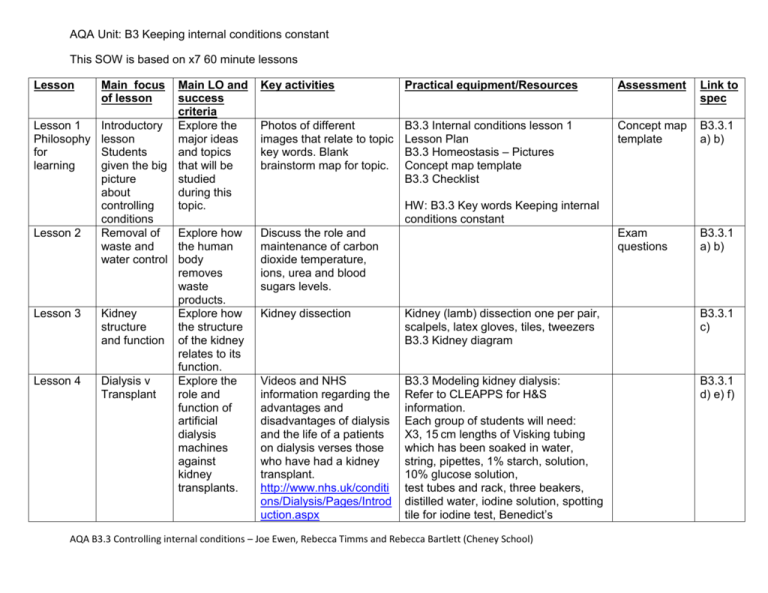
AQA Unit: B3 Keeping internal conditions constant This SOW is based on x7 60 minute lessons Lesson Main focus of lesson Main LO and success criteria Lesson 1 Introductory Explore the Philosophy lesson major ideas for Students and topics learning given the big that will be picture studied about during this controlling topic. conditions Lesson 2 Removal of Explore how waste and the human water control body removes waste products. Lesson 3 Kidney Explore how structure the structure and function of the kidney relates to its function. Lesson 4 Dialysis v Explore the Transplant role and function of artificial dialysis machines against kidney transplants. Key activities Practical equipment/Resources Assessment Link to spec Photos of different images that relate to topic key words. Blank brainstorm map for topic. B3.3 Internal conditions lesson 1 Lesson Plan B3.3 Homeostasis – Pictures Concept map template B3.3 Checklist Concept map template B3.3.1 a) b) Exam questions B3.3.1 a) b) HW: B3.3 Key words Keeping internal conditions constant Discuss the role and maintenance of carbon dioxide temperature, ions, urea and blood sugars levels. Kidney dissection Kidney (lamb) dissection one per pair, scalpels, latex gloves, tiles, tweezers B3.3 Kidney diagram B3.3.1 c) Videos and NHS information regarding the advantages and disadvantages of dialysis and the life of a patients on dialysis verses those who have had a kidney transplant. http://www.nhs.uk/conditi ons/Dialysis/Pages/Introd uction.aspx B3.3 Modeling kidney dialysis: Refer to CLEAPPS for H&S information. Each group of students will need: X3, 15 cm lengths of Visking tubing which has been soaked in water, string, pipettes, 1% starch, solution, 10% glucose solution, test tubes and rack, three beakers, distilled water, iodine solution, spotting tile for iodine test, Benedict’s B3.3.1 d) e) f) AQA B3.3 Controlling internal conditions – Joe Ewen, Rebecca Timms and Rebecca Bartlett (Cheney School) reagent/glucose test strips, access to a water bath if using Benedict’s reagent, labels, marker pen, eye protection. Lesson Lesson 5 Lesson 6 Lesson 7 Main focus of lesson Main LO and success criteria Temperature Explore how control the body maintains a core body temperature. Sugar Explore the control role and function for blood sugar regulation. Diabetes Explore the diagnosis and treatment of diabetes. Key activities B3.3 Modelling kidney dialysis B3.3 Dialysis NHS information sheet B3 Kidney transplants information Practical equipment/Resources Assessment Thermal images of hot and cold people. Discuss the difference and explain why this occurs. Link to spec B3.3.2 a) b) c) d) e) Link the role of insulin, glycogen, pancreas and liver to maintaining Blood sugar testing. Use case studies from NHS diabetes to understand how diabetics control their blood sugar levels. http://www.diabetes.nhs.u k/ Possible student or staff member (who is diabetic) to deliver a short talk about the role of insulin and blood glucose control in their life. B3.3 Diabetes information sheet B3.3 Checklist B3.3 Homeostasis Revision activity Mandala B3.3 Keeping internal conditions constant End of Unit Exam questions B3.3 Keeping internal conditions constant End of Unit Exam answers B3.3 Mindmap template AQA B3.3 Controlling internal conditions – Joe Ewen, Rebecca Timms and Rebecca Bartlett (Cheney School) B3.3.3 a) b) c) d) End of unit test – B3.3 Keeping internal conditions constant End of Unit Exam questions Concept map template B3.3 Mindmap template B3.3

